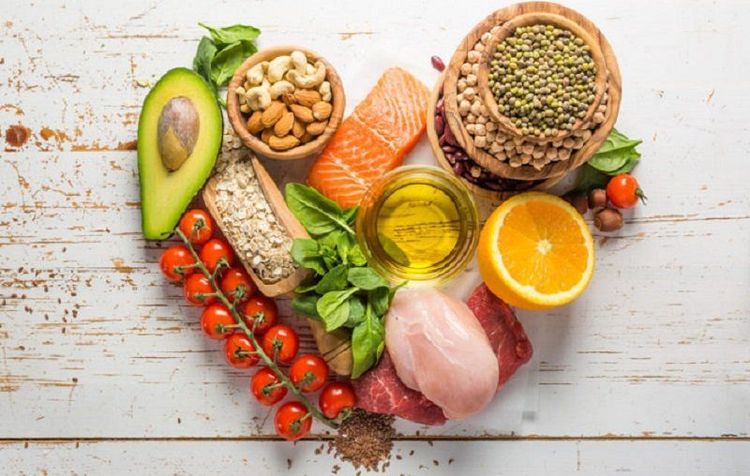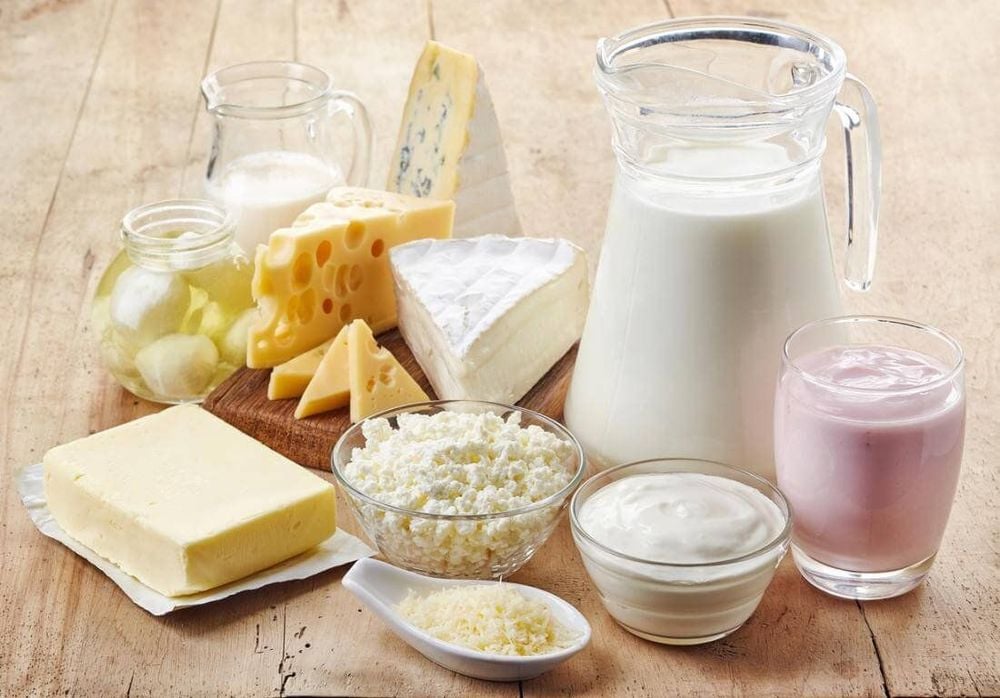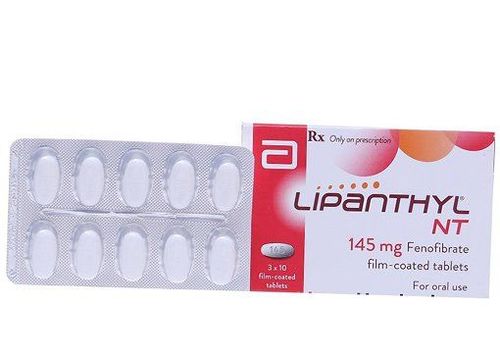This is an automatically translated article.
The article was professionally consulted by Dr. Tran Quoc Tuan - Emergency Medicine Doctor - Emergency Resuscitation Department - Vinmec Phu Quoc International General Hospital.In addition to medications and lifestyle modifications, numerous studies have shown that dietary changes can significantly lower blood pressure in people with high blood pressure, possibly immediately and over the long term. The content of the article will introduce a diet for people with high blood pressure recommended by many experts, called DASH.
1. What is the DASH diet?
DASH stands for Dietary Approaches to Stop Hypertension. This is a balanced and versatile diet formulated by the National Heart, Lung and Blood Institute to help treat or prevent high blood pressure. The DASH diet encourages you to reduce sodium in your diet and eat a variety of foods rich in nutrients that help lower blood pressure, such as potassium, calcium, and magnesium.By following the DASH diet, you can reduce your blood pressure by a few mmHg in just two weeks. Over time, systolic blood pressure can be reduced by 8 to 14 mmHg, significantly reducing the risk of complications from hypertension.
Because the DASH diet is a healthy diet that offers many health benefits beyond just lowering blood pressure. The DASH diet is also relevant and recommended to prevent osteoporosis, cancer, heart disease, stroke, and diabetes.
2. The DASH Diet: Sodium Levels
The DASH diet emphasizes vegetables, fruits, and low-fat dairy foods and consumes moderate amounts of whole grains, fish, poultry, and nuts.In addition to the standard DASH diet, there is also a lower sodium version. You can choose the version of the DASH diet that meets your health needs:
Standard DASH diet: You can consume up to 2,300 mg of sodium per day. Lower sodium DASH diet: You can consume less than 1,500 mg of sodium per day. Both versions of the DASH diet are intended to reduce the amount of sodium in your diet compared to previous or national diets, for example Americans can go up to 3,400 mg sodium per day or more.
The American Heart Association recommends 1,500 mg of sodium per day as the upper limit for adults. If you're not sure which sodium level is right for you, talk to your doctor.

Chế độ ăn DASH nhấn mạnh rau, trái cây và thực phẩm từ sữa ít béo và tiêu thụ vừa phải lượng ngũ cốc, cá, thịt gia cầm và các loại hạt
3. The DASH Diet Guide
What both versions of the DASH diet have in common is that they include lots of whole grains, fruits, vegetables, and low-fat dairy products. The DASH diet also includes some fish, poultry, and legumes.You can eat red meat, sweets and fats in limited quantities. The DASH diet is low in saturated fat, trans fat, and total fat.
Here are some recommended servings from each food group for the 2,000-calorie-per-day DASH diet:
Grains: 6 to 8 servings per day:
Grains including breads, cereals, and cereals , rice and pasta. Examples of one serving of cereal include 1 slice of whole-grain bread, 1 ounce of dry cereal, or 1/2 cup of cooked cereal, rice, or pasta. Focus on whole grains because they have more fiber and nutrients than refined grains. For example, use brown rice instead of white rice, whole wheat pasta instead of regular pasta, and whole grain bread instead of white bread. Look for products labeled "100% whole grain" or "100% whole wheat." Natural low-fat cereals and limited servings with butter, cream and cheese. Vegetables: 4 to 5 servings per day:
Tomatoes, carrots, broccoli, sweet potatoes, greens and other vegetables are high in fiber, vitamins and minerals like potassium and magnesium. Examples of a serving include 1 cup of leafy greens or 1/2 cup of raw or cooked vegetables. Don't think of vegetables as just a side dish - a meal in addition to vegetables with brown rice or whole-wheat noodles can provide just as much energy as the main course of the meal. Fresh and frozen vegetables - both good options. When buying frozen and canned vegetables, choose those that are labeled as low sodium or with no added salt. Get creative with how you prepare portions to encourage you to eat more vegetables. Fruit: 4 to 5 servings per day:
Many fruits don't take long to prepare a healthy meal or snack. Like vegetables, they are high in fiber, potassium and magnesium and are generally low in fat, but coconut is an exception. An example of a serving includes 1/2 cup of fresh, frozen or canned fruit, or 4 ounces of juice. A serving of fruit with meals and snacks, then end your day with a dessert of fresh fruit and low-fat yogurt. Remember that citrus fruits and juices, like grapefruit, can interact with some medications, so check with your doctor or pharmacist to see if they are right for you. If you choose canned fruit or juice, make sure it's sugar-free. Milk: 2 to 3 servings per day:

Sữa, sữa chua, phô mai và các sản phẩm từ sữa khác là nguồn cung cấp canxi, vitamin D và protein rất tốt
Lean meat can be a rich source of protein, B vitamins, iron and zinc. Cutting back on meat will allow for more vegetables. Examples of one serving include 1 egg or 1 ounce of cooked meat, poultry, or fish. Trim the skin and fat from poultry and then grill instead of frying in oil. Eat heart-healthy fish, like salmon, herring, and tuna. These fish are high in omega-3 fatty acids, which are good for your heart health. Nuts, seeds and legumes: 4 to 5 servings per week:
Almonds, sunflower seeds, kidney beans, peas, lentils and other legumes are good sources of magnesium, Very good potassium and protein. These foods are also full of fiber and phytochemicals, which are plant compounds that may help fight certain cancers and cardiovascular disease. Examples of one serving include 1/3 cup of nuts, 2 tablespoons of nuts or nut butter, or 1/2 cup of cooked beans or peas. Soy products, like tofu and tempeh, can be a good alternative to meat because they contain all the amino acids your body needs to make the complete protein like meat. Fats and oils: 2 to 3 servings per day:
Fats help your body absorb essential vitamins and help your body's immune system. But too much fat increases the risk of heart disease, diabetes and obesity. The DASH diet strives for a balance of healthy fats by limiting total fat intake to less than 30% of daily calories from fat, with a focus on monounsaturated fats. An example of a serving includes 1 teaspoon of margarine, 1 tablespoon of mayonnaise. Saturated fats and trans fats are the main culprits in the increased risk of coronary heart disease. DASH helps keep your daily saturated fat low by limiting meat, butter, cheese, whole milk, cream and eggs, and foods made with lard, palm oil, and coconut oil in your diet. . Read food labels on margarine and salad dressings so you can choose foods that are lowest in saturated fat and free of trans fats. Sweet things:

Bạn không cần phải loại bỏ hoàn toàn đồ ngọt khi thực hiện chế độ ăn kiêng DASH.
Drinking too much alcohol can raise blood pressure. The Dietary Guidelines for Americans advise men to limit alcohol to no more than two drinks per day and women to one or less. The DASH diet does not address caffeine consumption. The effect of caffeine on blood pressure is still unclear, but at least caffeine can cause a temporary increase in blood pressure. If you already have high blood pressure or if you think caffeine has an effect on your blood pressure, talk to your doctor about your caffeine consumption. DASH diet and weight loss:
Although the DASH diet is not a diet for people who want to lose weight, you can still lose weight because it guides you to healthier food choices. The DASH diet typically includes about 2,000 calories per day. If you're trying to lose weight, you may need to reduce your calorie intake further based on your desired goals and health conditions. To help patients determine the causes, complications and levels of hypertension, Vinmec International Hospital currently has a Basic Hypertension Checkup Package and an Advanced Hypertension Checkup Package for the following subjects:
People Being overweight or obese is more likely to develop high blood pressure. People who have a habit of eating salty, high-salt foods often. People who regularly smoke cigarettes, drink alcohol for a long time. People who are sedentary, work sitting in one place, or suffer from mental stress, headaches due to work pressure. Relatives with a history of high blood pressure have a higher risk of developing the disease than the general population. The older you get, the higher your risk of developing high blood pressure, so it's important to get screened for high blood pressure as soon as possible.

Tuổi càng lớn thì nguy cơ tăng huyết áp càng cao, do đó nên tầm soát bệnh tăng huyết áp càng sớm càng tốt
Doctor Tran Quoc Tuan has 12 years of experience at Vinh Long General Hospital, Gia Dinh People's Hospital, Nguyen Trai Hospital. Currently working as an Emergency Resuscitation Doctor at Vinmec Phu Quoc International General Hospital.
Please dial HOTLINE for more information or register for an appointment HERE. Download MyVinmec app to make appointments faster and to manage your bookings easily.
Reference source: Webmd.com












